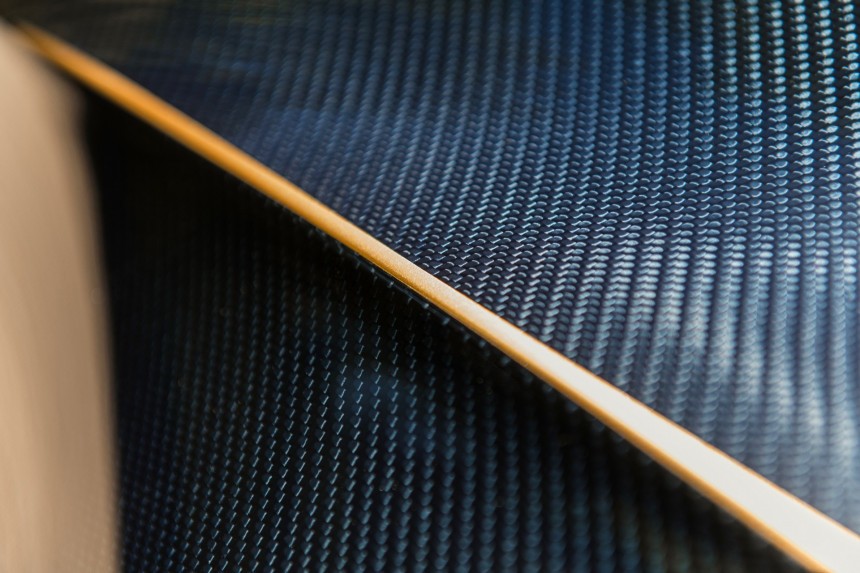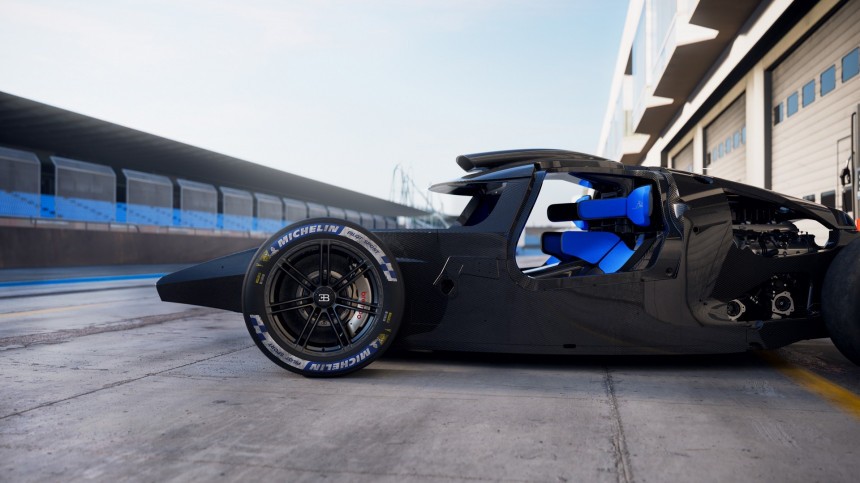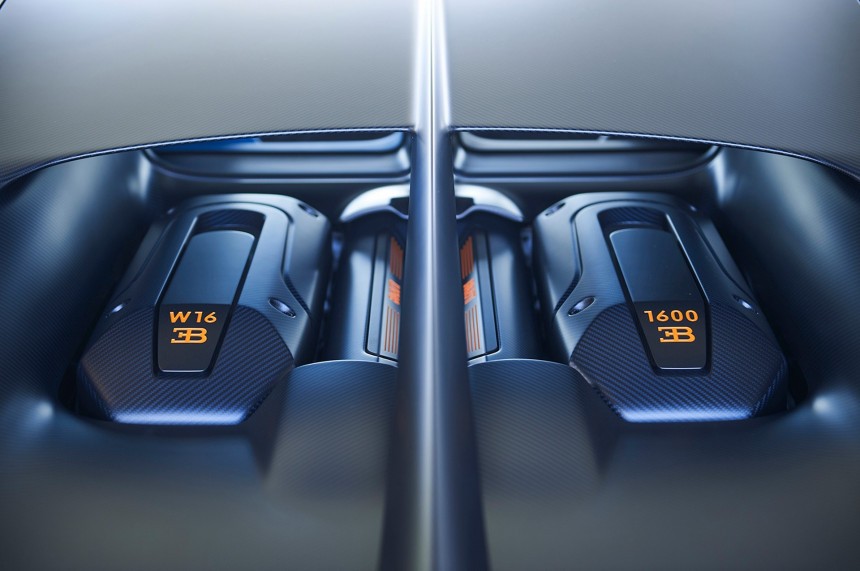What do a typical incandescent light bulb and the world’s most famous hypercar have in common? Apart from the curvaceous shape and overall aerodynamic fluidity, there is little else at first glance. But let’s use the fantastic patent of Thomas Alva Edison to shed some light (pun premeditated) on the matter. The answer is – believe it or not, but please do – carbon fiber and Bugatti can testify to this.
When we say Bugatti, which would be the first three attributes that pop into our minds concerning the famous carmaker? For me, it’s speed, profanely outrageous price tags, more speed, and state-of-the-art technology to achieve immense speed (yes, I've listed four of them, but the speed counts as one).
Among the myriad of cutting-edge tech used to achieve those phenomenal speeds, a monstrous combustion engine, and a hypersonic transmission are paramount. And yet, no Bugatti on our beloved Planet Piston would have been able to stage a worldwide session of jaw dislocation without a particular element.
A chemical element, to be exact – the all-present carbon that is literally the building block of our existence. Since the barrier-breaking, boundary-leaping Veyron took the world by a 250-mph/400-kph hurricane two decades ago, carbon has been at the core of Bugatti engineering. In fact, carbon is the most abundant material present in the German-French hypercars.
So what’s the connection with the light bulb, Edison, and all that? Carbon is present in various shapes in our lives, from a pen’s lead to diamonds. But one particular form of carbon is what interests us here – strings. Or, to use the commonplace term, fibers, since almost every automaker with a knack for high-performance brags about using carbon fiber at one point or another.
Here’s the catch: carbon fiber was invented long before the automobile, believe it or not. Around 1850, an English inventor and scientist, Joseph Swan, used carbonized paper filaments to create the world’s first electric light bulb. However, due to technological impediments – concerning crude vacuum-producing tools and an unstable and inaccurate electrical power source – his invention took some thirty years before it shone brightly on our world.
In 1880, Swan’s light bulb was commercially produced and sold; the same year, another brilliant mind from the other side of the Atlantic patented his own incandescent electric light bulb. His name was Thomas Edison, and he, too, relied upon carbon filaments to heat up until glowing white-hot. The two men had inadvertently invented carbon fiber, albeit without knowing it.
Granted, their application is as far away from today’s definition of carbon fiber as the first automobile is from a Bugatti Bolide. The two inventors merely found a way of isolating carbon atoms from other parasitic elements, creating a high-purity fiber of carbon that had none of the properties of today's high-tech material. But the invention paved the way to what would eventually become the pinnacle of lightweight, high-strength (hyper)carmaking.
More than a century after the Swan light bulb first lit up, in the early sixties of the twentieth century, carbon fibers were being used by Rolls Royce – those Brits just can’t stay away from world progress, can they? – to make compressor blades for their turbofan engines.
By the late 80s and early 90s, the resurrected Bugatti company used the wonder material to build the equally amazing EB110 – one of the world’s first cars to sport a carbon fiber monocoque. Capitalizing on carbon’s potential, Bugatti expanded the use of this chemical element beyond structural applications and gave it a title of nobility by showcasing it in its entire splendor on the bodywork.
The Veyron Pur Sang of 2007 was the originator of this exposure, revealing the beauty of an otherwise unknown intricacy that only engineers used to fully appreciate and admire. 16 years later, Bugatti has nine different tints and various levels of visible carbon fiber to put on their cars, and they all rely on a formidably labor-intensive process to make possible,
If you have a sweet tooth for things nerdy and scientific, you might know that carbon fiber panels are fabricated by overlapping sheets of woven fibers. Each string of carbon atoms in a single thread is roughly between 5 and 10 micrometers in diameter – think one-tenth of a human hair. This is where the hard part begins: the fibers must be arranged in a very accurate pattern to yield the extreme tensile strengths and structural rigidity necessary to create a 300+ mph hypercar.
Aligning the microscopic strands of carbon is complex, complicated, challenging, and time-consuming. Still, the advantages are undeniable: body components made of carbon fiber are two-thirds lighter than if stamped, cast, or machined from aluminum and about half as heavy as steel. At the same time, a carbon fiber part is five times stronger than steel and twice as stiff.
Several months of carbon craftsmanship are needed to achieve the ultra-high standards required by a multi-million dollar hypercar such as a Bugatti. For example, the largest single component made from carbon fiber - a two-meter long side panel (some six feet six inches) – takes nearly a week to produce. The raw material is laid in a mold and then heated in a high-pressure autoclave at 248°F (120°C) for two hours.
However, when the interwoven pattern of said panel must be visible to the naked eye, things take a turn for the complication. This is when engineers and designers decide how and why the carbon fiber sheets must be arranged to create the desired visual effects without compromising any of the car’s dynamic properties.
The carbon fibers are aligned at a 45° angle to create the perfect fishbone in the middle; any offset above 2° is discarded as scrap, and the panel has to be made again. Any imperfection, no matter how minuscule – be it a fiber out of position, fraying, bumps, or kinks - and the panel fails the quality check.
And that’s just for one panel, but every detail is paramount in a car that costs more than all the convertible HEMI-powered ‘Cudas from 1971 put together. This means that all carbon fiber elements must create a visual harmony, so each panel has to perfectly fall in its own place while at the same time fitting perfectly in the overall image.
Like high-end watchmaking, carbon-crafting a Bugatti is a work of high accuracy, patience, meticulous skill, and rigorous standards. Just so that the owners can then cry in silence when some Swedish-born automotive atrocity destroys their carefully crafted combustion jewel in a speed and acceleration bout.
Among the myriad of cutting-edge tech used to achieve those phenomenal speeds, a monstrous combustion engine, and a hypersonic transmission are paramount. And yet, no Bugatti on our beloved Planet Piston would have been able to stage a worldwide session of jaw dislocation without a particular element.
A chemical element, to be exact – the all-present carbon that is literally the building block of our existence. Since the barrier-breaking, boundary-leaping Veyron took the world by a 250-mph/400-kph hurricane two decades ago, carbon has been at the core of Bugatti engineering. In fact, carbon is the most abundant material present in the German-French hypercars.
Here’s the catch: carbon fiber was invented long before the automobile, believe it or not. Around 1850, an English inventor and scientist, Joseph Swan, used carbonized paper filaments to create the world’s first electric light bulb. However, due to technological impediments – concerning crude vacuum-producing tools and an unstable and inaccurate electrical power source – his invention took some thirty years before it shone brightly on our world.
In 1880, Swan’s light bulb was commercially produced and sold; the same year, another brilliant mind from the other side of the Atlantic patented his own incandescent electric light bulb. His name was Thomas Edison, and he, too, relied upon carbon filaments to heat up until glowing white-hot. The two men had inadvertently invented carbon fiber, albeit without knowing it.
More than a century after the Swan light bulb first lit up, in the early sixties of the twentieth century, carbon fibers were being used by Rolls Royce – those Brits just can’t stay away from world progress, can they? – to make compressor blades for their turbofan engines.
By the late 80s and early 90s, the resurrected Bugatti company used the wonder material to build the equally amazing EB110 – one of the world’s first cars to sport a carbon fiber monocoque. Capitalizing on carbon’s potential, Bugatti expanded the use of this chemical element beyond structural applications and gave it a title of nobility by showcasing it in its entire splendor on the bodywork.
If you have a sweet tooth for things nerdy and scientific, you might know that carbon fiber panels are fabricated by overlapping sheets of woven fibers. Each string of carbon atoms in a single thread is roughly between 5 and 10 micrometers in diameter – think one-tenth of a human hair. This is where the hard part begins: the fibers must be arranged in a very accurate pattern to yield the extreme tensile strengths and structural rigidity necessary to create a 300+ mph hypercar.
Aligning the microscopic strands of carbon is complex, complicated, challenging, and time-consuming. Still, the advantages are undeniable: body components made of carbon fiber are two-thirds lighter than if stamped, cast, or machined from aluminum and about half as heavy as steel. At the same time, a carbon fiber part is five times stronger than steel and twice as stiff.
However, when the interwoven pattern of said panel must be visible to the naked eye, things take a turn for the complication. This is when engineers and designers decide how and why the carbon fiber sheets must be arranged to create the desired visual effects without compromising any of the car’s dynamic properties.
The carbon fibers are aligned at a 45° angle to create the perfect fishbone in the middle; any offset above 2° is discarded as scrap, and the panel has to be made again. Any imperfection, no matter how minuscule – be it a fiber out of position, fraying, bumps, or kinks - and the panel fails the quality check.
And that’s just for one panel, but every detail is paramount in a car that costs more than all the convertible HEMI-powered ‘Cudas from 1971 put together. This means that all carbon fiber elements must create a visual harmony, so each panel has to perfectly fall in its own place while at the same time fitting perfectly in the overall image.
Like high-end watchmaking, carbon-crafting a Bugatti is a work of high accuracy, patience, meticulous skill, and rigorous standards. Just so that the owners can then cry in silence when some Swedish-born automotive atrocity destroys their carefully crafted combustion jewel in a speed and acceleration bout.





























